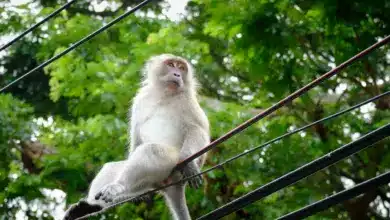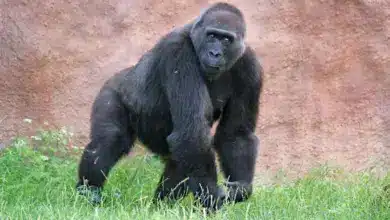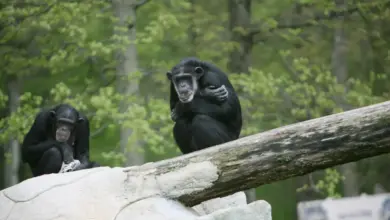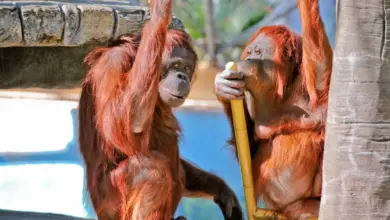Old World Monkeys—those that live in Africa and Asia—are significantly different from the New World monkeys of South and Central America. In fact, they are more closely related to the apes (chimpanzees, gorillas, orangutans and gibbons) than they are to the less highly-evolved primates of the American rainforests. Old World monkeys tend to be larger than those of the New World and they also tend to live in social groups that are more highly organized. None of them has the prehensile tail that is so characteristic of monkeys in the Americas. Types of old-world monkeys include:
[ez-toc]
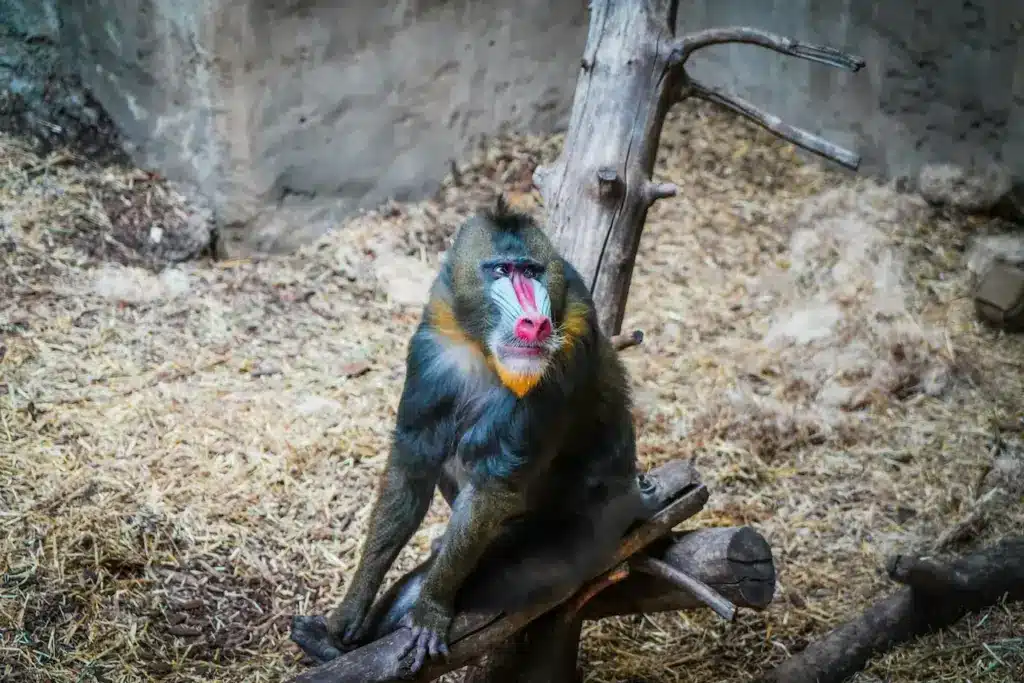
The baboon-like mandrill (Mandrillus sphinx) of the West African rainforests is the world’s largest monkey as well as the most colorful. Males average 25 kilos (55-60 pounds) in weight, and some specimens reach 110 pounds (50 kilos). The face and rump of the male mandrill turn brightly multi-colored when the animal reaches sexual maturity. Mandrills forage across the rainforest floor in huge troops of up to several hundred individuals.
Baboons, depending on which of the five species they belong to, can grow almost as large as mandrills. All species live in Africa, with the Guinea baboon (Papio papio) of West Africa reaching a weight of around 14 kg (30 pounds) and the chacma baboon (Papio ursinus) of southern Africa growing as large as 40 kilos (90 pounds). Like the mandrill, baboons live in troops that are dominated by the larger male animals. Their primary predator is the leopard.
Next to humans, the macaque is the most widespread of primates, with 22 species inhabiting diverse ecosystems from North Africa to Japan. Because some species of macaque lack tails, they have sometimes been confused with apes—which they are not. One of the most familiar macaque species is the rhesus monkey (Macaca mulatta) of India, Southeast Asia and southern China. The IUCN lists a number of the numerous macaque species as endangered; several that are native to small Indonesian islands are listed as critically endangered.
Langurs comprise more than a dozen long-tailed, leaf- flower- and bud-eating monkey species that range from India through Southeast Asia and Indonesia. One species, the Hanuman langur (Semnopithecus entellus), is named for the Indian god Hanuman, and is the sacred monkey of India. Depending on sex and species, sizes range from around 12 pounds (7 kg) to 40 pounds. Some langurs spend most of their time foraging on the ground; others, like the Javan langur (Trachypithecus auratus) pictured here, are primarily arboreal. The IUCN lists 18 species of langur as either “endangered” or “critically endangered.”
The rain forests of Africa are home to five species of black-and-white colobus monkey and nine species of red colobus monkey. One thing all the colobus species have in common is that, unlike other monkeys, they lack opposable (bendable and useful) thumbs on their hands. Colobus monkeys spend most of their time in the rainforest canopy, where they frequently and acrobatically leap from tree to tree. They live in groups that are led by a dominant male. Red colobus monkeys are known for being the favorite prey animal of male chimpanzees on the hunt. The IUCN lists five of the nine red colobus species as either “endangered” or “critically endangered.”
Environmental Threats To Old World Monkeys
All rainforest monkey species face serious and ongoing threats from habitat loss as the rainforests are logged and cleared for agriculture. In addition, in many areas, especially in Africa, they are killed and sold for food.
The Predators Of Old World Monkeys
In Africa, monkeys need to fear pythons, crocodiles, eagles and leopards—though by far, their greatest predator is Man. Asian monkeys have to watch out for all of the same predators as their African cousins—plus be on the lookout for tigers. However, the tiger’s threat to monkeys is diminishing with each passing year as world’s largest predatory cat slides ever closer to extinction in the wild.
